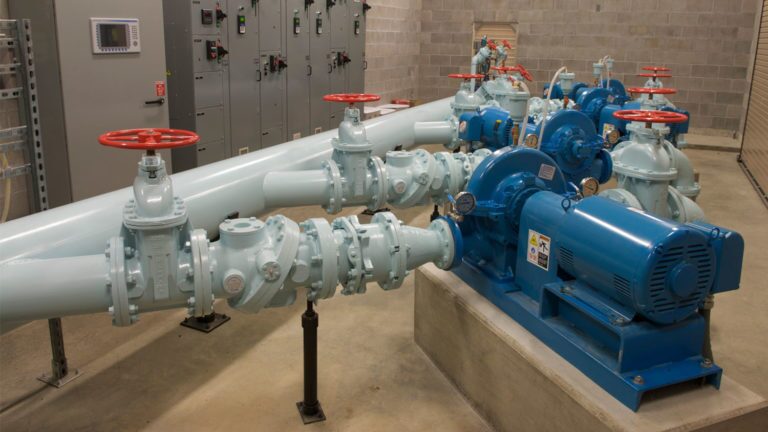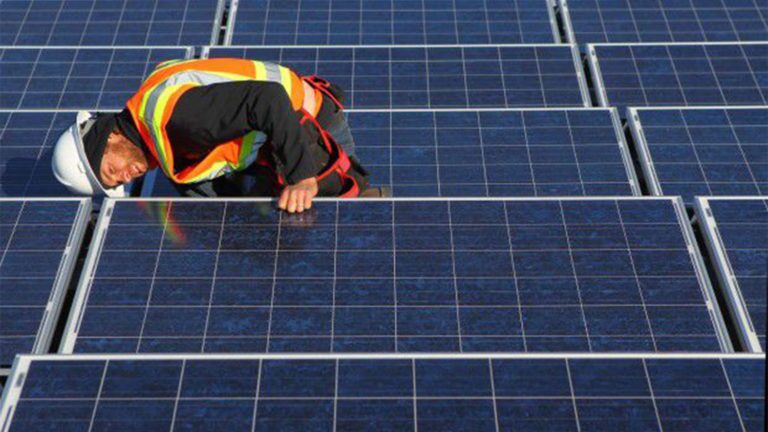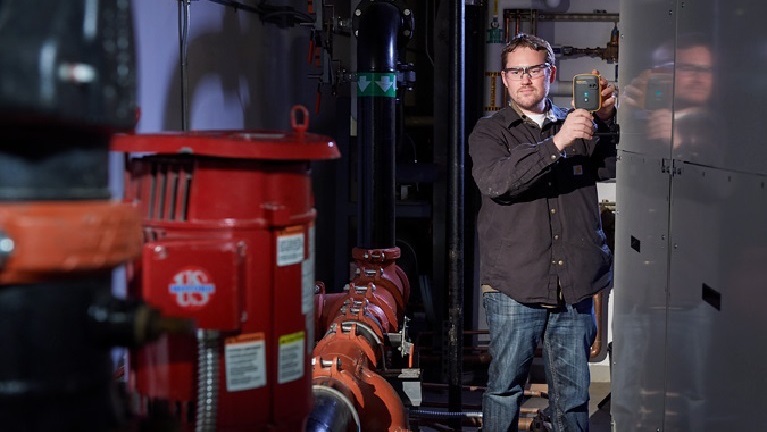Next-generation machinery alignment tools make it much faster to become proficient
Diagnosing and correcting misalignment on critical industrial machines, including compressors, pumps, turbines, and the like, used to be the domain of only expert alignment specialists. But today’s more advanced alignment systems enable maintenance pros with a range of skills and experience levels to succeed in this important endeavor, says David Metz, a veteran millwright and machinist who is a technical sales representative for PRUFTECHNIK, a division of Fluke Reliability.
In his webinar presentation, “Tips, technology, and tools for next-generation machinery alignment,” Metz explains how alignment practices in general and laser shaft alignment in particular have evolved to become easier for a variety of maintenance and reliability workers to perform. You can listen to the on-demand version of his webinar on Accelix.com.
Metz completed a 30-year career at Exelon Energy in 2016 and then came to work at PRUFTECHNIK because he liked using its laser alignment tools. “The tooling used to take a long time to learn,” he says. “And it was typically a job for someone with a lot of experience in just alignment. But nowadays, the tools we use are really easy to interface with and to learn. In a lot less time, you can become proficient at alignment.”
Regardless of the tools used, he says in the webinar, the core practice of shaft alignment is still about aligning the axes: “… at the point of power transfer from one shaft to another, the axes of rotation of both shafts should be colinear when the machine is running under normal operation conditions.”
Figure 1 below demonstrates proper alignment as well as the four misalignment conditions most commonly found on rotating equipment.

Whether you’re using a laser shaft alignment system, a dial indicator or a straight edge or feeler gauge, the measurements remain the same, Metz notes.
To perform an alignment, measure the offset — the distance between rotation axes at a given point – and the angularity, or the angle between two rotation axes. Laser alignment tools perform these measurements and associated calculations automatically. But the practitioner still needs to understand what to measure, where, and why.
In his presentation, Metz explains the measurement types per each misalignment condition.
Coupling type also has a significant impact on how to measure and perform the alignment. Metz shares examples and cautions about the differences between flexible couplings — all learnings from his time in the field with Exelon Energy. He also explains how to treat spacer couplings, with their extended length. If you are using a dial indicator, you can attempt the reverse indicator method. But the laser alignment method greatly simplifies the process and yields more accurate results.
Alignment professionals of all levels, regardless of tool type used, should follow a pre-alignment checklist similar to Figure 2 below.
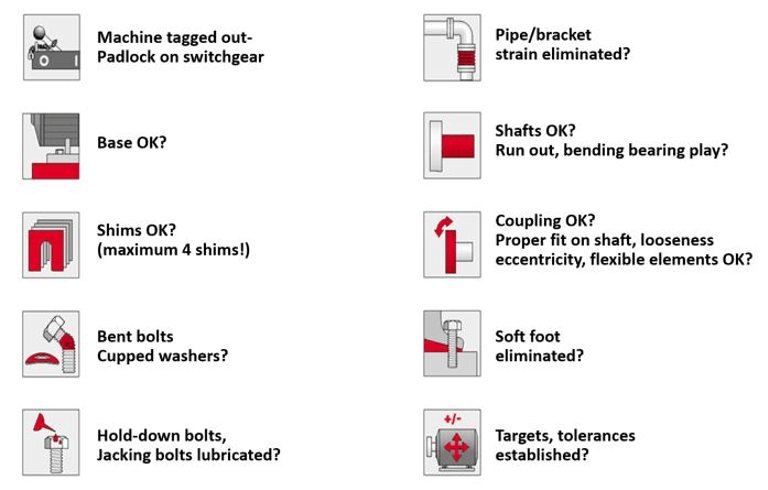
Metz talks at length in the presentation about shims and when excessive shimming can exacerbate alignment problems instead of solving them. Use pre-cut shims, he advises, and use no more than four in one place to avoid creating a spring effect.
“The hardest part in alignment,” he says, “is the side move. You’re making your machine measurements, you loosen up the bolts, and it doesn’t do what you want it to do – that’s when it becomes frustrating. If the motor goes up, it’s probably soft foot.”
Do not, Metz insists, use a sledgehammer to move the motor. The blow will move the shaft as well. Use a jack bolt, a machine puller, or a dead blow hammer.
In some situations, you may need to consider thermal growth (expansion of metal) when performing an alignment — how and where will the shaft move to as the metal heats up? If you’re using a digital tool, input the expected positional change of the machine during operation.
Do not, Metz cautions, measure a machine after it has run fully loaded and then been turned off. Those measurements don’t work as a proxy for true thermal growth. If at all possible, use the live trend capabilities of a digital measurement system as demonstrated in Figure 3.
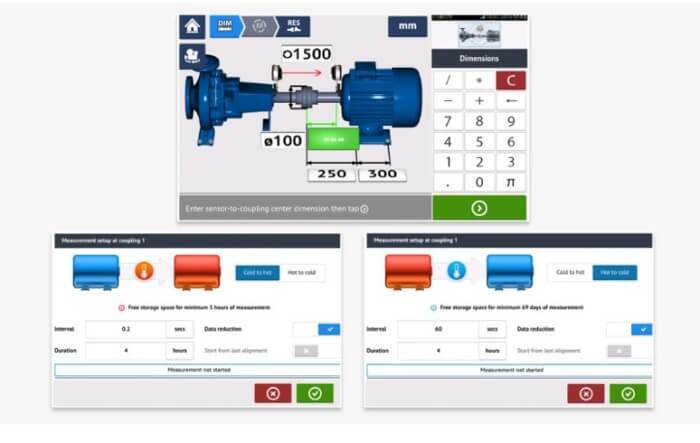
Figure 3. Live trend setup using a PRUFTECHNIK laser alignment system after accounting for thermal growth parameters at machine feet and inputting target values at coupling.
Using a newer laser alignment tool, “you can measure multiple couplings at the same time, which saves you a lot of time, but the killer feature is being able to watch them all on the live move.”
People newer to alignment should have no concerns, Metz says. “The alignment tools now specifically make the job easier to learn, especially the touch screen. With the changes in the workforce, it’s really important for more people to be able to do machine alignments.”
Metz provides more expert in-situ advice and alignment demonstrations during the presentation, which is available on-demand.

